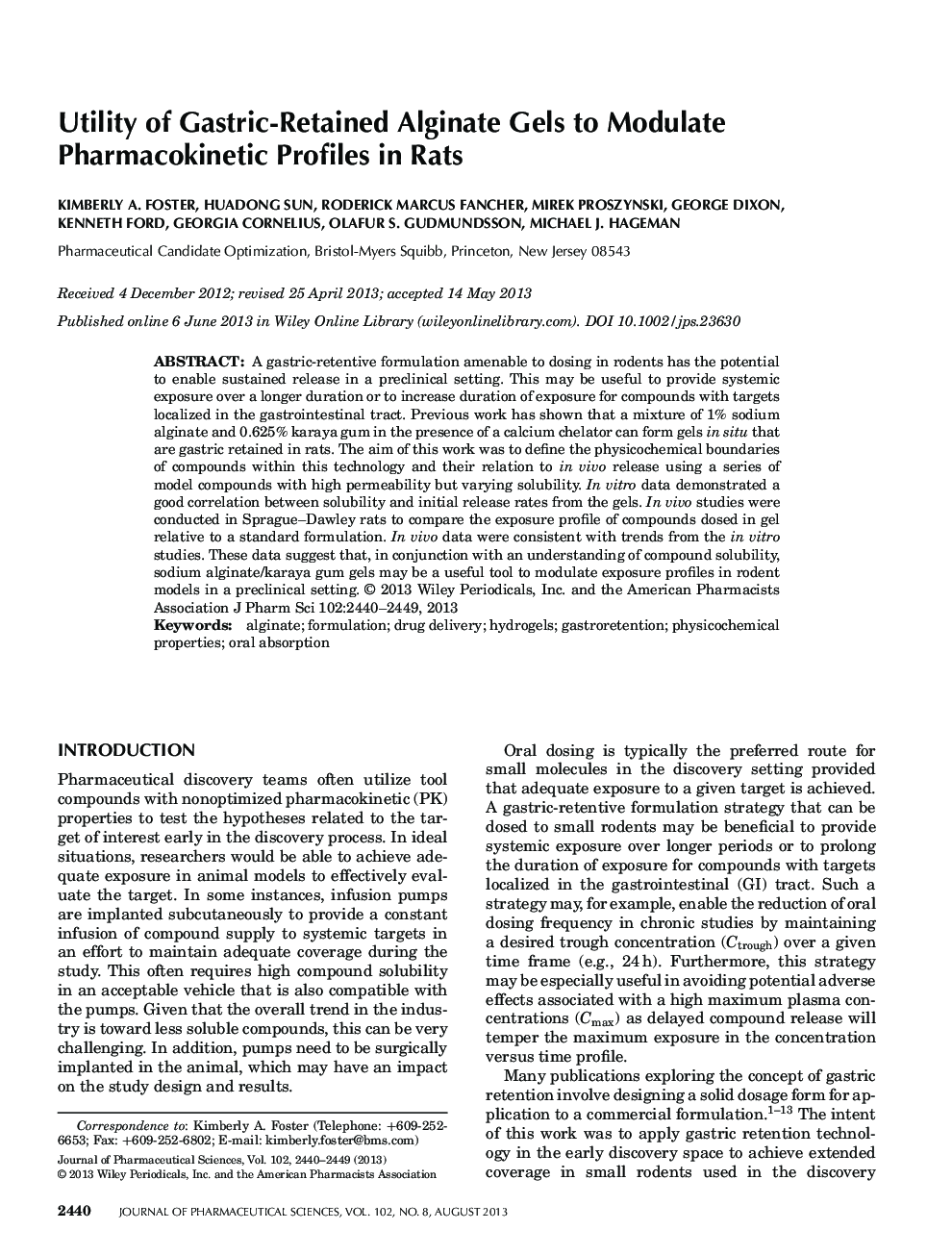| Article ID | Journal | Published Year | Pages | File Type |
|---|---|---|---|---|
| 10162672 | Journal of Pharmaceutical Sciences | 2013 | 10 Pages |
Abstract
A gastric-retentive formulation amenable to dosing in rodents has the potential to enable sustained release in a preclinical setting. This may be useful to provide systemic exposure over a longer duration or to increase duration of exposure for compounds with targets localized in the gastrointestinal tract. Previous work has shown that a mixture of 1% sodium alginate and 0.625% karaya gum in the presence of a calcium chelator can form gels in situ that are gastric retained in rats. The aim of this work was to define the physicochemical boundaries of compounds within this technology and their relation to in vivo release using a series of model compounds with high permeability but varying solubility. In vitro data demonstrated a good correlation between solubility and initial release rates from the gels. In vivo studies were conducted in Sprague-Dawley rats to compare the exposure profile of compounds dosed in gel relative to a standard formulation. In vivo data were consistent with trends from the in vitro studies. These data suggest that, in conjunction with an understanding of compound solubility, sodium alginate/karaya gum gels may be a useful tool to modulate exposure profiles in rodent models in a preclinical setting.
Keywords
Related Topics
Health Sciences
Pharmacology, Toxicology and Pharmaceutical Science
Drug Discovery
Authors
Kimberly A. Foster, Huadong Sun, Roderick Marcus Fancher, Mirek Proszynski, George Dixon, Kenneth Ford, Georgia Cornelius, Olafur S. Gudmundsson, Michael J. Hageman,
